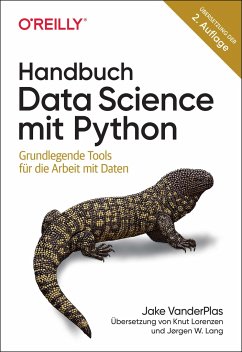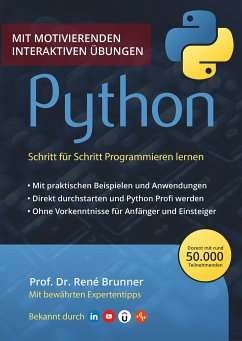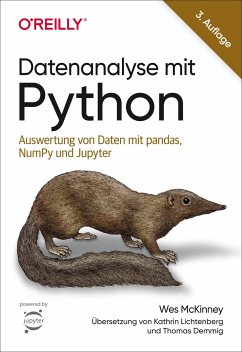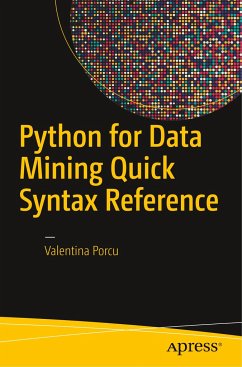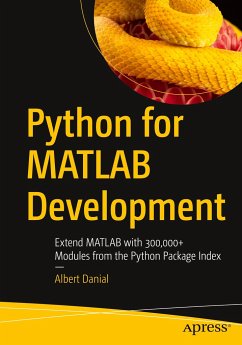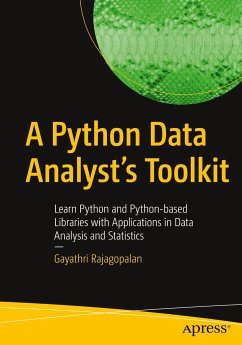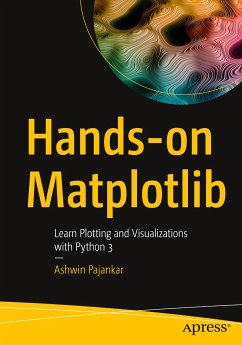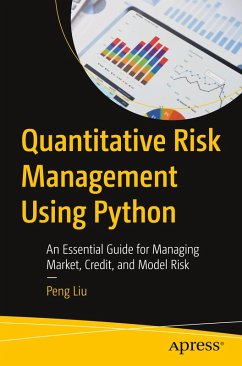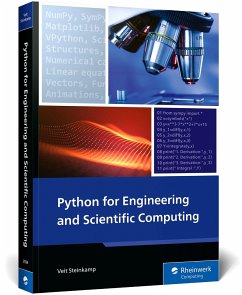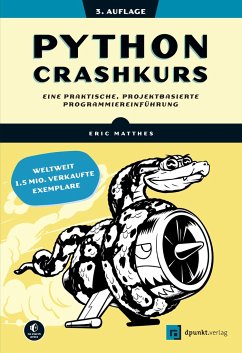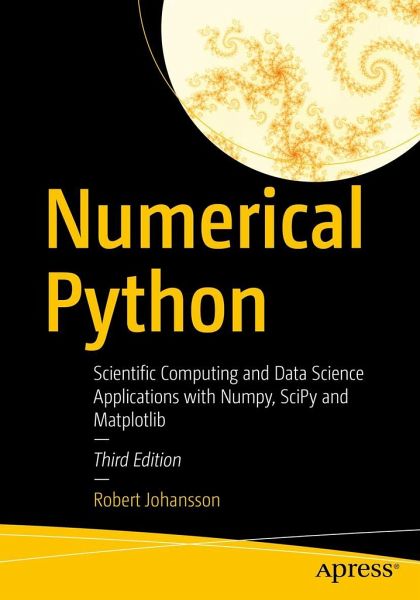
Numerical Python
Scientific Computing and Data Science Applications with Numpy, SciPy and Matplotlib

PAYBACK Punkte
12 °P sammeln!
Learn how to leverage the scientific computing and data analysis capabilities of Python, its standard library, and popular open-source numerical Python packages like NumPy, SymPy, SciPy, matplotlib, and more. This book demonstrates how to work with mathematical modeling and solve problems with numerical, symbolic, and visualization techniques. It explores applications in science, engineering, data analytics, and more.Numerical Python, Third Edition, presents many case study examples of applications in fundamental scientific computing disciplines, as well as in data science and statistics. This...
Learn how to leverage the scientific computing and data analysis capabilities of Python, its standard library, and popular open-source numerical Python packages like NumPy, SymPy, SciPy, matplotlib, and more. This book demonstrates how to work with mathematical modeling and solve problems with numerical, symbolic, and visualization techniques. It explores applications in science, engineering, data analytics, and more.
Numerical Python, Third Edition, presents many case study examples of applications in fundamental scientific computing disciplines, as well as in data science and statistics. This fully revised edition, updated for each library's latest version, demonstrates Python's power for rapid development and exploratory computing due to its simple and high-level syntax and many powerful libraries and tools for computation and data analysis.
After reading this book, readers will be familiar with many computing techniques, including array-based and symbolic computing, visualization and numerical file I/O, equation solving, optimization, interpolation and integration, and domain-specific computational problems, such as differential equation solving, data analysis, statistical modeling, and machine learning.
What You'll Learn
Work with vectors and matrices using NumPyReview Symbolic computing with SymPyPlot and visualize data with MatplotlibPerform data analysis tasks with Pandas and SciPyUnderstand statistical modeling and machine learning with statsmodels and scikit-learnOptimize Python code using Numba and Cython
Who This Book Is For
Developers who want to understand how to use Python and its ecosystem of libraries for scientific computing and data analysis.
Numerical Python, Third Edition, presents many case study examples of applications in fundamental scientific computing disciplines, as well as in data science and statistics. This fully revised edition, updated for each library's latest version, demonstrates Python's power for rapid development and exploratory computing due to its simple and high-level syntax and many powerful libraries and tools for computation and data analysis.
After reading this book, readers will be familiar with many computing techniques, including array-based and symbolic computing, visualization and numerical file I/O, equation solving, optimization, interpolation and integration, and domain-specific computational problems, such as differential equation solving, data analysis, statistical modeling, and machine learning.
What You'll Learn
Work with vectors and matrices using NumPyReview Symbolic computing with SymPyPlot and visualize data with MatplotlibPerform data analysis tasks with Pandas and SciPyUnderstand statistical modeling and machine learning with statsmodels and scikit-learnOptimize Python code using Numba and Cython
Who This Book Is For
Developers who want to understand how to use Python and its ecosystem of libraries for scientific computing and data analysis.





